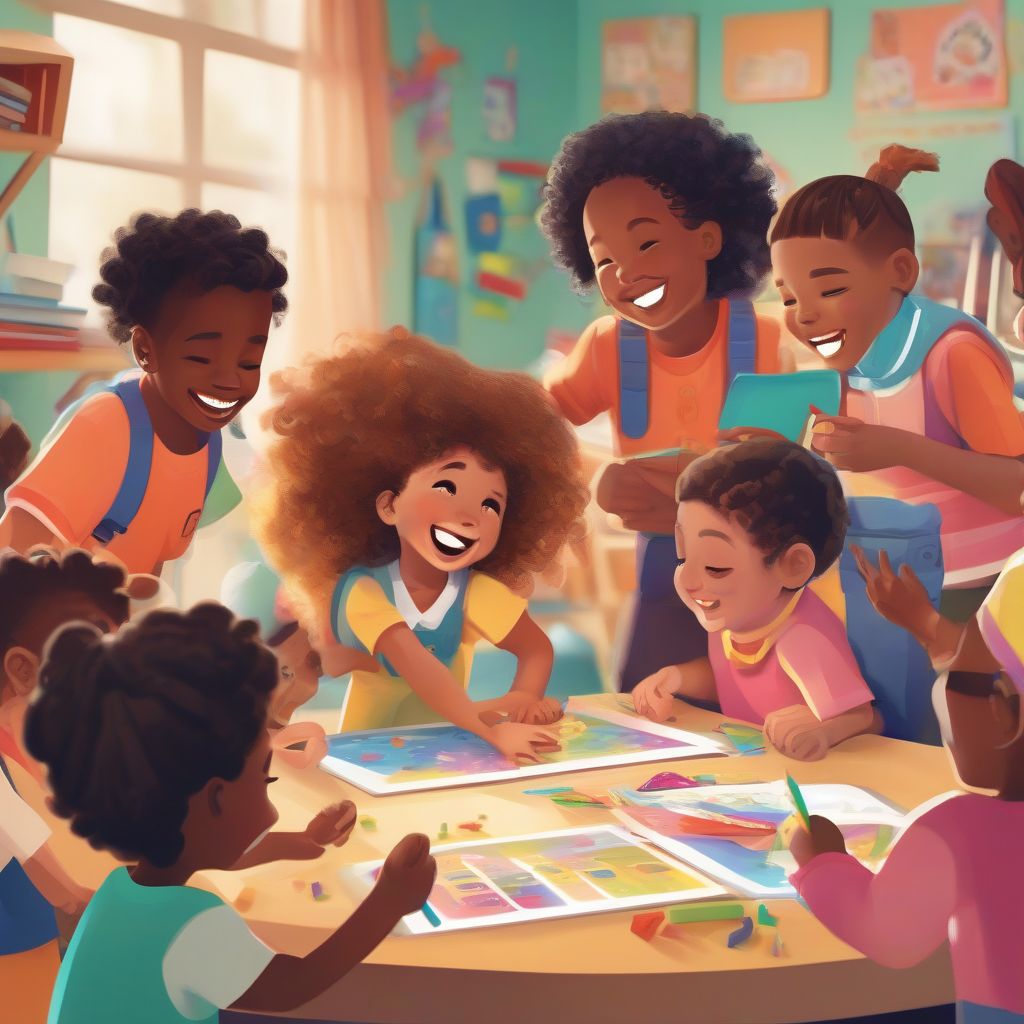“The best investment you can make is in the education of your children.” This age-old adage rings truer than ever in today’s world, where knowledge is power. As parents, educators, and caregivers, we all yearn to provide the children in our lives with the very best resources to ignite their curiosity and set them on a path to lifelong learning. But with a sea of educational materials available, how do we discern those that truly make a difference?
This comprehensive guide dives deep into the world of high-quality educational materials for children, equipping you with the knowledge and insights to make informed decisions. Let’s embark on this journey together to empower the young minds around us!
What Constitutes High-Quality Educational Materials for Children?
High-quality educational materials are more than just colorful toys or flashy apps. They are tools carefully crafted to foster holistic development, catering to a child’s cognitive, social, emotional, and physical needs. Here’s what sets them apart:
1. Age-Appropriateness: Effective materials align with a child’s developmental stage, using age-appropriate language, concepts, and activities. They challenge without overwhelming.
2. Engaging and Interactive: The best resources ignite a child’s curiosity, encouraging active participation rather than passive consumption. Think hands-on activities, thought-provoking questions, and opportunities for creative exploration.
3. Alignment with Learning Objectives: Quality materials have clearly defined learning goals, whether introducing new concepts, reinforcing existing knowledge, or developing specific skills.
4. Research-Backed Methodologies: Look for resources that incorporate evidence-based educational practices, such as play-based learning, inquiry-based learning, or the Montessori method.
5. Cultural Relevance and Sensitivity: High-quality materials reflect diversity and inclusivity, representing a variety of cultures, backgrounds, and perspectives.
 Children Engaging in Interactive Learning
Children Engaging in Interactive Learning
Navigating the World of Educational Materials: Key Considerations
1. Identify Your Child’s Learning Style: Every child is unique, with their own preferred ways of absorbing information. Some thrive in hands-on environments, while others excel with visual or auditory learning. Observe your child, experiment with different materials, and adapt your choices to their strengths and interests.
2. Set Clear Learning Goals: What do you hope your child will gain from these materials? Are you aiming to introduce new concepts, reinforce existing knowledge, or develop specific skills? Defining clear objectives will guide your selection process.
3. Look Beyond the Buzzwords: Don’t be swayed by flashy packaging or marketing claims alone. Delve deeper into the material’s content, methodology, and alignment with your child’s needs.
4. Embrace the Power of Play: Play is the language of children. Choose materials that make learning fun and engaging through games, puzzles, stories, or creative activities.
5. Seek Professional Guidance: If you’re feeling overwhelmed or unsure where to start, don’t hesitate to consult with your child’s teachers, librarians, or educational specialists. They can provide valuable insights and recommendations tailored to your child’s specific needs and learning style.
The Transformative Power of High-Quality Educational Materials
Investing in high-quality educational materials is an investment in a child’s future. Here’s how these resources can shape young minds:
- Ignite a Love of Learning: When children are engaged and challenged in meaningful ways, learning becomes an adventure, not a chore.
- Develop Critical Thinking Skills: Quality materials encourage children to question, analyze, and think critically about the world around them.
- Foster Creativity and Imagination: Open-ended resources provide children with the freedom to explore their creative potential, experiment with ideas, and think outside the box.
- Build Confidence and Independence: As children master new concepts and skills through these materials, they gain a sense of accomplishment and confidence in their abilities.
- Prepare for Future Success: By laying a strong foundation for learning, high-quality materials equip children with the skills and knowledge they need to thrive academically and beyond.
Where to Find High-Quality Educational Materials
- Local Libraries: Libraries are treasure troves of free educational resources, from books and magazines to educational toys and games.
- Museums and Science Centers: These institutions offer interactive exhibits and programs designed to engage children in hands-on learning experiences.
- Educational Supply Stores: Browse a curated selection of books, games, manipulatives, and other learning materials tailored to different age groups and subject areas.
- Reputable Online Retailers: Many online retailers offer a wide variety of educational resources, making it convenient to find materials specific to your child’s interests and needs. Be sure to check reviews and ratings before making a purchase.
- Free or Low-Cost Educational Websites and Apps: Numerous websites and apps provide high-quality educational content, often for free or at a low cost.
Conclusion
Choosing the right educational materials for children can feel like navigating a maze, but by arming ourselves with knowledge and a focus on quality, we empower the young minds around us to thrive. Remember, the most effective resources are those that spark joy, ignite curiosity, and foster a lifelong love of learning.
What steps will you take today to unlock your child’s full learning potential? Share your thoughts and experiences in the comments below!
[amazon bestseller=”educational toys for kids ages 5-7″]
